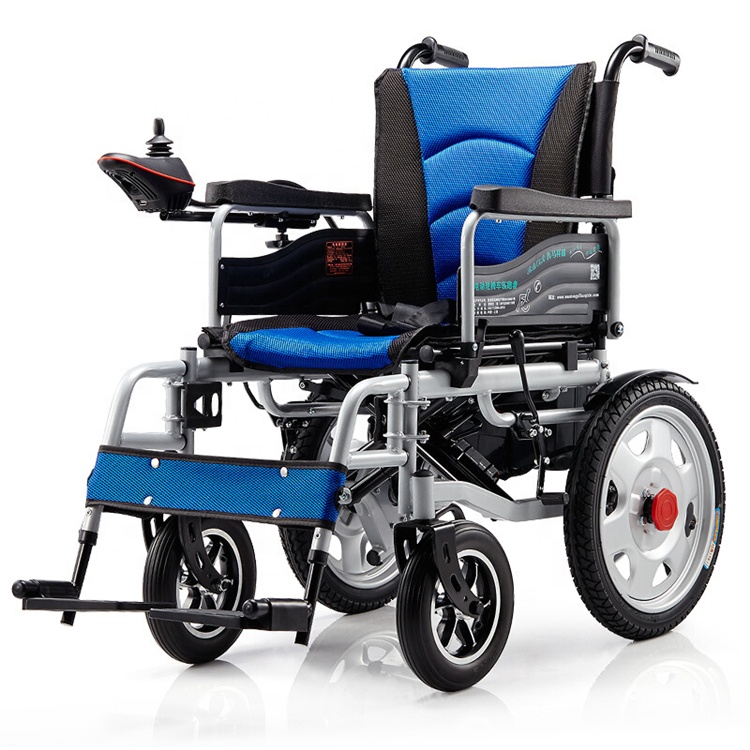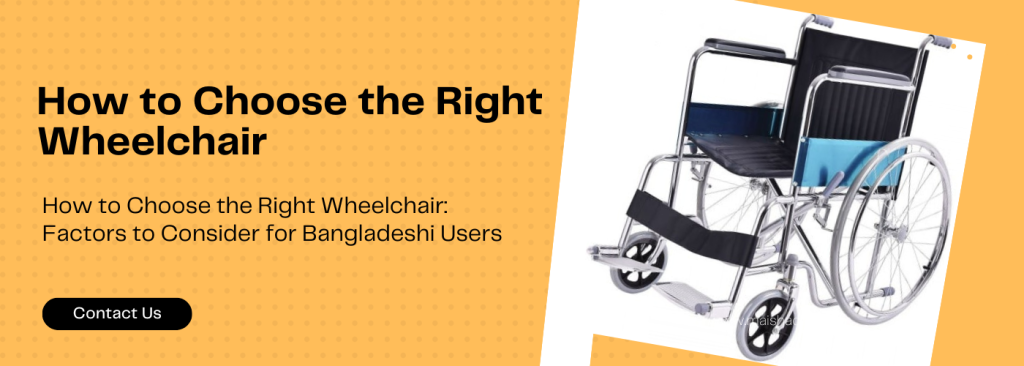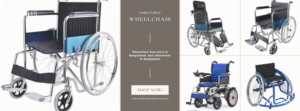
Best 5 Wheelchairs in Bangladesh: A wheelchair is more than just a means of mobility; it’s a passport to independence and freedom for people with limited physical ability. Demand for quality wheelchairs has risen greatly in Bangladesh due to increased awareness and better availability of health equipment.
Choosing the right wheelchair requires a detailed understanding of the product’s facilities, difficulties, and suitability for specific needs. This blog highlights the best 5 wheelchairs in Bangladesh, covering their features, challenges, and intended users.
Best 5 Wheelchairs in Bangladesh:- Limited Terrain Adaptability:
Stalls on uneven or unpaved surfaces, common in rural areas of Bangladesh. Basic Features: Doesn’t include advanced options for reclining or adjustable seating.
Best 5 Wheelchairs in Bangladesh: Why Would You Use It?
This wheelchair is perfect for anyone who requires dependable, everyday mobility at an economical cost. The wheelchair is ideal in short-term or low-use situations. Who Will Use It? Surgery or injury patients during recovery. Elderly patients who need mobility assistance from time to time.
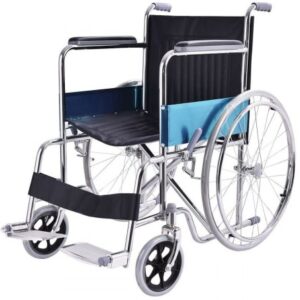
01. Standard Manual Wheelchair Facilities
The standard manual wheelchair is a versatile and affordable option for mobility.
The following are the major features:
- Lightweight: easily portable and maneuverable.
- Foldable Frame: Conducive to store and transport, ideal for urban settings in Bangladesh
- Durable Build: High-quality, long-lasting material used, such as steel or aluminum.
- Padded Seat and Backrest: Comfort in case of longer use.
- Affordable Price: Affordable for an average family in Bangladesh.
Problems
Despite the advantages, there are some disadvantages to the standard manual wheelchair:
- Manual Propulsion: Requires upper body strength, which may not be suitable for everyone.
- Ground Adaptability Limited: It stalls on uneven, unpaved surfaces that are common in rural Bangladesh.
- Basic Features: Doesn’t include advanced options for reclining or adjustable seating.
Why Would You Use It?
This wheelchair is ideal for anyone who needs reliable, day-to-day mobility at an affordable price. The wheelchair is particularly well-suited for short-term or low-use applications.
Who Is the User?
Patients recovering from surgery or injury. Elderly patients who require assistance with mobility on an occasional basis.
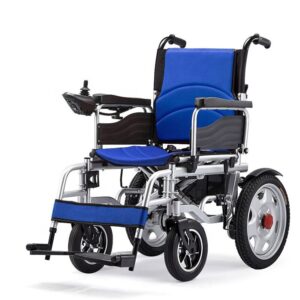
02. Electric Wheelchair Facilities
Electric wheelchairs are designed to offer maximum ease and independence to the user. The key features include:
- Motorized Propulsion: No human effort is needed, hence befitting those with weak strength.
- Joystick Control: Easy to maneuver with desired and accurate movements.
- Customizable Seating: Adjustable backrests, armrests, and footrests add to the comfort of the user.
- Long Battery Life: Suitable for extended outdoor use even in busy cities like Dhaka.
- Strong Wheels: Appropriate for rough terrain, ensuring smooth rides. Challenges
Some disadvantages of an electric wheelchair are that the high price sometimes becomes too expensive for some users in Bangladesh.
- Need for Regular Maintenance Servicing: Have to be serviced on a routine basis to keep them running well.
- Charging Dependent: Power supply inconsistency in rural areas may pose issues.
Why Would You Use It?
It is ideal for patients who need mobility every day without physical stress. They can move with the help of an electric wheelchair over long distances and while going outdoors.
Target Users
- Those with severe physical disabilities.
- The elderly, whose arm strength is not as strong.
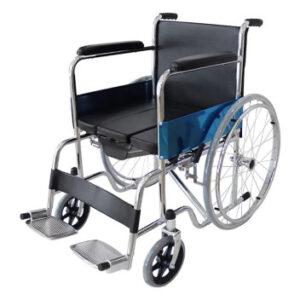
3. Commode Wheelchair Facilities
The commode wheelchair is a multi-functional solution for mobility and personal care.
Its facilities include:
- Built-in Commode: Allows users to attend to toileting needs with ease.
- Compact Design: Suitable for indoor usage, especially in apartments and care homes in Bangladesh.
- Hygienic Materials: Easy to clean, thus assuring better hygiene.
- Adjustable Features: Padded seats and foldable footrests increase the comfort level.
Difficulties
Following are some limitations of the commode wheelchair: …Limited Use: Not designed for use outdoors or on rough surfaces. …Smaller Wheels: Difficult to maneuver over thresholds or uneven floors.
Why Would You Use It?
This is a great wheelchair for someone with mobility and toileting needs, which extends the benefits of using it in an in-home setting.
Who Will Use It?
- Geriatric patients with chronic diseases.
- Those patients who are recovering from some form of surgery or injury that makes it difficult to ambulate.
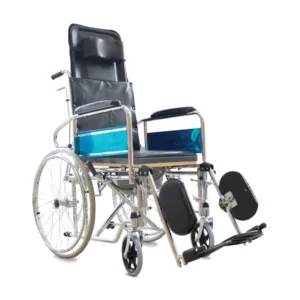
4. Pediatric or sleeping system Wheelchair
Accommodations
Pediatric wheelchair, intended for children, is designed to meet the following needs of a child:
- Light Frame: Easy to maneuver by caretakers.
- Seat and Backrest: Adjustable to accommodate growth, hence permitting long use of the wheelchair.
- Colors and Designs: Bright to appeal to children.
- Safety: Fitted with seat belts and anti-tipping wheels.
Challenges
In spite of all the benefits offered, pediatric wheelchairs pose certain Issues:
- Limited Weight Capacity: It would possibly require frequent upgrading as the child grows.
- Specialized Features: Difficult to avail in remote areas of Bangladesh.
Why Would You Use It?
Pediatric wheelchairs ensure appropriate mobility solutions for the kids, keeping them active and independent.
Who Will Use It?
Children with physical disabilities or injuries. Kids who have to go through long-term medical treatments needing walking aids.
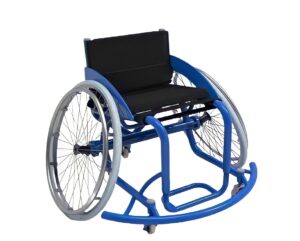
5. Sports Wheelchair
Facilities
Sports wheelchairs are designed to achieve high performance and agility. The key features are:
- Aerodynamic Design: For speed and maneuverability
- Strong Frame: Reinforced to bear the brunt of intense activity
- Custom Fit: Components adjustable to the user’s sport
- Lightweight Materials: Enables quick and effortless motion
Difficulties
Sports wheelchairs are very useful for athletes but also have drawbacks
- High Price: Very expensive for most users in Bangladesh.
- Limited Accessibility: Might not be as accessible in smaller towns or more rural areas.
Why Would You Use It?
Sports wheelchairs allow people with disabilities to engage in sports, activities that build confidence and fitness levels.
Who Will Use It?
- Pro athletes with disabilities.
- Recreational users taking part in amateur sports.
Frequently Asked Questions (FAQs)
1. What is the average cost of a wheelchair in Bangladesh?
The prices vary from 5,000 BDT for a regular manual wheelchair up to over 50,000 BDT for electric ones.
2. Are wheelchairs adaptable?
Yes, most of them are adjustable in seating, foothold, and armrests.
3. Where can I purchase wheelchairs in Bangladesh?
You will get access to quality wheelchairs by noted sellers like BD Medical Store selling a variety of models while guaranteeing home delivery services.
4. How will I select the wheelchair that best fits my needs?
While selecting the right wheelchair:
- Think about your mobility indoors and outdoors.
- Check your physical condition and go for either a manual or electric wheelchair based on that. Your budget should also be taken into consideration.
- You can also seek one with reclining seats or even commodes if you need it.
5. Are the electric wheelchairs suitable to go out-of-doors in Bangladesh?
Yes, many electric wheelchairs can handle uneven terrain; however, for a highly functional wheelchair outdoors, one needs to get a hard wheel with large battery capacity.
6. Is wheelchair rental available in Bangladesh?
It is possible to rent wheelchairs in big cities like Dhaka and Chittagong. So, this option is a cost-effective alternative for short-term use.
7. How do I take care of my wheelchair?
To take proper care of a wheelchair:
- Wash the frame, seat, and wheels regularly.
- Check the tires for their wear and tear.
- Apply grease to movable parts for easy movement of the parts.
- Check batteries on the electric models; keep charged.
